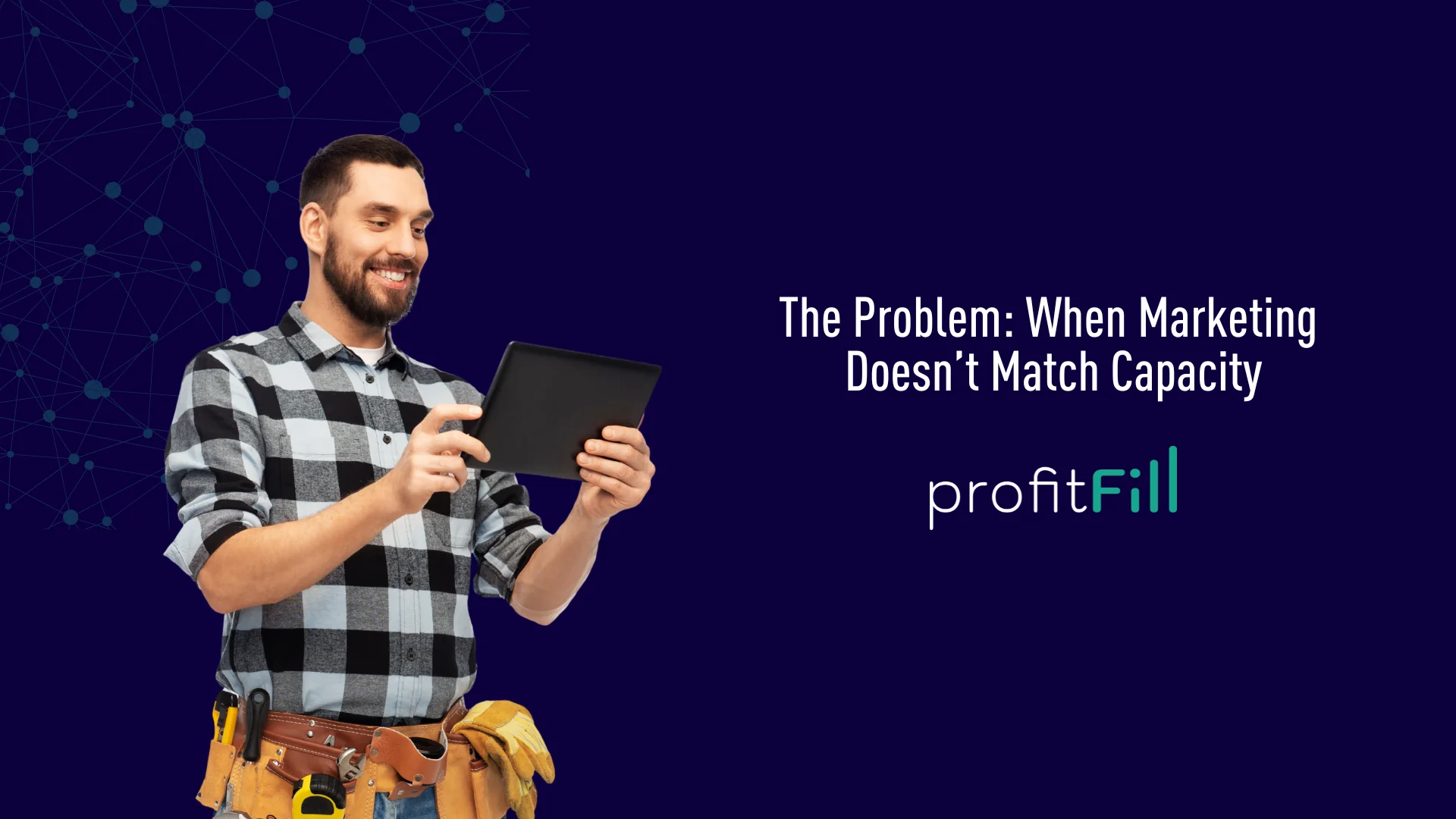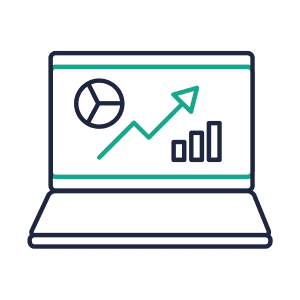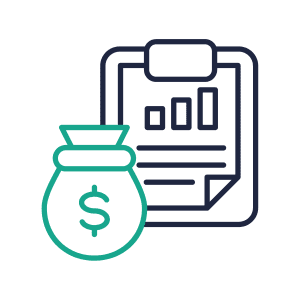Every home service company knows the frustration.
One week, your team is buried in installs and emergency calls — the next, the phones are dead quiet. But your Google Ads bill? That stays consistent.
Traditional ad campaigns don’t know when your technicians are booked solid or when you need to fill the schedule. They just keep spending. That’s where throttling comes in — the ability to automatically adjust ad budgets and bids based on real-time business capacity.
It’s one of the most powerful (and overlooked) ways to make digital marketing profitable, not just active.
How Ad Throttling Works
Think of ad throttling like a smart thermostat for your marketing spend.
You feed your current capacity data — how many jobs are booked, how many openings you have, or even how many calls you can take per day — into your ad system. When your schedule fills, the system lowers your bids or pauses ad spend. When capacity drops, it increases bids again to attract new leads.
The result: a steady flow of business that matches your actual availability.
Here’s what that flow looks like visually:
Capacity Input → Budget Adjustment → Consistent Lead Flow → Higher ROI
Instead of “more ads = more spend,” throttling creates responsive advertising — your campaigns rise and fall naturally with your operations.
Which Platforms Can Be Throttled (and Which Can’t)
Not every advertising platform gives you the same level of control. Some allow full automation, while others require more manual intervention. Knowing which is which helps you decide where to put your budget — and where automation tools like ProfitFill can do the heavy lifting.
Throttleable or Semi-Throttleable Platforms
1. Google Search Ads (Manual CPC, Target CPA, Target ROAS)
This is the gold standard for capacity-based control. With Google Search campaigns, you can adjust bids, budgets, or even pause specific ad groups in real time. ProfitFill connects directly through the Google Ads API to automate these adjustments — meaning your bids rise and fall based on your actual technician availability.
- Manual CPC: Full bid control, ideal for real-time throttling.
- Target CPA or ROAS: Budget-based throttling still works well by setting caps or adjusting targets dynamically. Useful for optimizing ROAS while still not giving up full control to Google’s smart bidding.
2. Microsoft/Bing Search Ads
Bing’s platform closely mirrors Google’s and allows similar automation through API integrations. It’s often a smart secondary channel when Google volume peaks — and it can be throttled with equal precision.
3. Google Local Service Ads (LSAs)
While LSAs can’t currently be throttled automatically through APIs, they can be manually scaled up or down with weekly budget adjustments. You can also temporarily pause categories or ZIP codes during overbooked periods. It’s not real-time automation, but it’s a simple lever that still ties directly to your capacity.
4. Yelp Ads
Yelp offers straightforward budget control, allowing you to raise or lower your daily or monthly spend based on lead flow. While it doesn’t offer automated throttling yet, it’s easy to adjust manually when your team’s schedule changes — making it a good secondary platform for visibility during slower weeks.
5. Lead Aggregators (Angi, eLocal, etc.)
Lead services like Angi and eLocal can’t be programmatically throttled, but they do allow manual control through budget caps or toggling service areas on and off. These platforms can be strategically paused during peak demand and reactivated when your inbound volume dips.
Harder-to-Throttle Platforms
1. Performance Max (Google)
Performance Max blends multiple ad types under one campaign. While you can adjust the total budget, Google’s internal automation makes it impossible to precisely control which channels slow down. It’s great for broad reach, but not for fine-tuned throttling.
2. Meta (Facebook & Instagram)
Meta’s learning algorithm doesn’t respond well to frequent pausing or spend fluctuations. It’s better used for long-term awareness, retargeting, or consistent branding rather than schedule-driven lead flow.
3. YouTube & Display Campaigns
YouTube and Display are top-of-funnel awareness tools — perfect for brand lift, not for demand-based throttling. Their algorithms need stability to perform, so they work best when left running consistently.
Why Throttling Is the Secret to ROI Stability
Without throttling, most home service companies fall into the same trap: overpaying for leads when they can’t handle more work and underspending when they need it most.
Throttling changes that.
During low-demand months, throttling allows you to increase your ad spend to match your call volume goals — ensuring your schedule is full even in shoulder season.
During peak seasons, it ensures you don’t overspend or bid too aggressively, keeping your crews busy without overshooting the budget.
It’s a smarter way to manage spend — one that keeps marketing aligned with your actual business needs.
How ProfitFill Automates It
ProfitFill wasn’t designed as another bidding tool — it was built around the 6 Profit Principles that every HVAC company needs to understand to make Search Engine Marketing actually profitable.
The first principle is knowing how and when profits are made.
In home services, once you’ve covered your daily overhead, every additional job that day is mostly gross profit. But if your technicians go home early or your phones are quiet, that profit opportunity is gone. ProfitFill helps capture those last few jobs that make the day’s revenue truly profitable.
The second and third principles — be flexible with your budget and don’t overbook
PPC marketing should never run at a fixed pace. When you’re fully booked, your ads should slow down or pause. When you’ve got openings, your spend should ramp up automatically. That’s exactly what ProfitFill does.
You simply set your guardrails — for example:
“When I’m booked out more than three days, reduce ad spend,”
and “Don’t spend more than $X this month.”
From there, ProfitFill continuously reads your CRM data, monitors technician availability, and adjusts your Google and Bing campaigns accordingly. It’s an automated version of the same smart decision-making you’d make if you were watching the schedule yourself — only faster, and without human error.
The fourth principle — all jobs are not created equal
This is where the system gets even smarter. ProfitFill can prioritize the most profitable jobs first, such as “no heat” or “AC replacement” calls, when capacity is tight. Instead of buying clicks randomly, you’re buying only the right calls at the right time.
The fifth principle — you’re not spending your own money.
Every ad dollar comes from revenue that your system generates. When you use Search Engine Marketing to fill open capacity, you’re essentially letting your customers fund your next sale. ProfitFill simply ensures those dollars are spent where they’ll deliver the most profit, not waste.
ProfitFill is the automation of the Profit Principles. It applies them in real time, every hour of every day, adjusting your spend based on actual business conditions — so you’re always marketing within your most profitable range.
The last Profit Principle, #6: PPC Should Only Be Used to Fill 30% of Your Schedule
The final Profit Principle — and one of the most important — is understanding how much of your schedule PPC should actually fill.
Search Engine Marketing (SEM) is not meant to replace your entire marketing mix. It’s a profit lever, not a volume engine. Paid search is designed to capture the small percentage of homeowners who are actively searching for HVAC or plumbing services right now — not the much larger audience who isn’t in the market yet.
That’s why Profit Principle #6 recommends that PPC fill roughly 30% of your total schedule. The other 70% should come from organic SEO, repeat customers, referrals, and brand-driven marketing — things like radio, TV, and community presence that build long-term market share.
Here’s why this balance matters:
- If you rely too heavily on PPC, your cost per job rises, and you end up competing on price for every lead.
- If you don’t use PPC enough, you leave profitable capacity unfilled — and those last, high-margin jobs go to your competitors.
By letting PPC fill that last 30% of your schedule — the margin between “covering overhead” and “maximizing profit” — you turn paid media into a precision tool
That’s exactly what ProfitFill was built to do. It automatically monitors your booked capacity and throttles ad spend so PPC only fills what’s available — no more, no less. This keeps your overall marketing mix balanced and your profit margin protected.
The Bottom Line: Profit Is About Precision, Not Volume
The most successful HVAC companies aren’t the ones buying the most clicks — they’re the ones aligning their marketing spend with their operational capacity.
When you understand how and when profits are made, and you use technology to act on that in real time, marketing stops being a gamble and becomes a controlled profit lever.
That’s what ProfitFill was built for. It’s how you stop spending blindly, protect your margins, and finally make paid media behave like a business strategy — not a line item.





